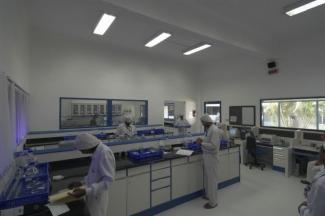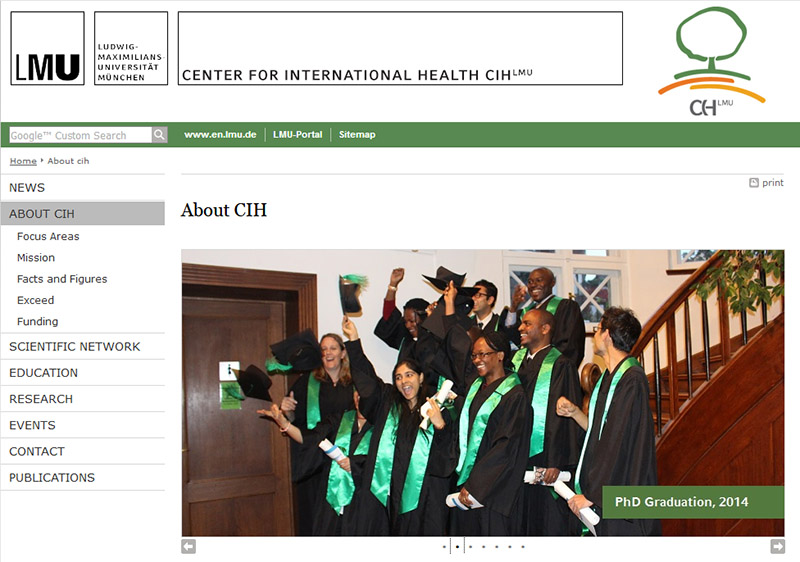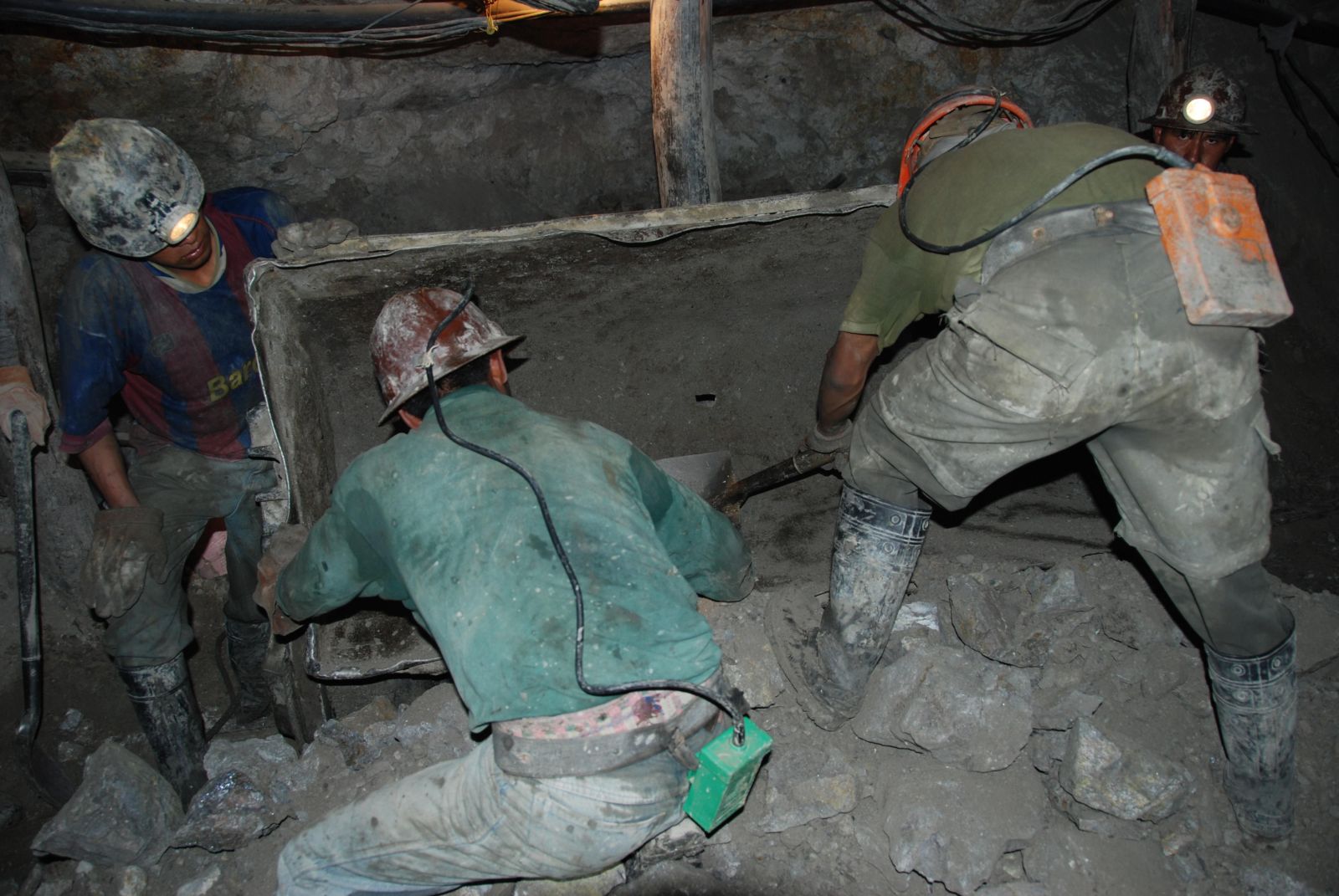Multi-resistant bacteria
Global threat

Why has the MRB problem grown so much worse in recent years?
From time immemorial, bacteria have had to defend themselves from naturally occurring antibiotics. Fungi, for example, produce such antibiotics. Today, bacteria also encounter human-made antibiotics, which are either derived from nature or produced by chemical synthesis. Such drugs have been excessively used for years, both in human medicine and in livestock raising. When bacteria are massively exposed to antibiotics, resistance emerges. That can happen in hospitals, in laboratories and pharma-production plants. In practice, it mostly happens when an antibiotic is prescribed too often and too readily. Things become particularly dangerous when antibiotics get into the open environment and come into contact with bacteria that are already resistant. That is how MRB are incubated. They multiply fast.
Is there really no defence against those bacteria?
We normally still have two or three antibiotics left that are effective against extremely multi-resistant bacteria. That number is small. We are close to having our backs against the wall. If this trend continues, we will eventually have no effective antibiotic against certain “germs”. That is scary.
Why is the problem in developing and emerging countries like India even more serious than in Europe?
Antibiotics are consumed on a massive scale. They are available without prescription and are relatively cheap. Poor hygiene is also a problem, of course. Every year, some 60,000 newborn die of MRB infections in India, according to one study. Apart from that, patients in India are not tested to establish what pathogenic bacteria are present in the body and which antibiotics need to be used. All too often, the technology needed is unavailable. In many countries, various antibiotics are used simply by trial and error, without adequate microbiological diagnostics. At Leipzig University Hospital, we routinely test for 24 substances. That is not standard practice everywhere. Even in Germany, awareness of the issue has grown only in recent years. We are learning more about the globalisation of pathogens and MRB daily. In India, more awareness of the dangers is needed, both in regard to healthcare and the natural environment.
Why did you look for multi-resistant bacteria in India?
For some time, we have been screening all patients who have been in a foreign hospital or on holiday abroad for MRB when they are admitted to our hospital in Leipzig. The high incidence of certain MRB in people returning from India was noticeable, and we wanted to know the reason. Journalists working for the broadcaster NDR got in touch, moreover. They were interested in the topic too and wanted to make a documentary. So, we went to Hyderabad together. We collected samples there and could prove that large populations of MRB were present in the open environment. Moreover, very high levels of both antibiotic and antifungal substances were present in the immediate vicinity of pharmaceutical manufacturing plants. That is worrying. In all probability, the main source of MRB is human and animal faeces, but the resistance development is being “fuelled” even more by pharma-industry effluents. We made a film about it and verified the findings in a systematic, scientific study (see Lübbert et. al., 2017).
What is the situation in Africa?
Africa has similar problems, but they have not been documented. If you take a close look, you will probably find even more resistance problems than those we know of today. However, Africa has no significant pharma industry that might release antibiotics into the environment. It has a different problem. The pharmaceuticals that are imported to Europe are quality-tested, even though there is no detailed evaluation of the circumstances of the manufacturing process. But the products shipped from India and China to Africa are often of lower quality. Africa gets what cannot be marketed globally.
As a pharma producer, China is just as important as India. What are conditions like there?
The big difference is that pharma producers rely on better infrastructure in China. Companies in China are connected to the regular water-supply system. In India, they have water delivered by lots of tank trucks every day. In most cases, there is no proper system for effluent treatment. In many ways, the situation resembles the early days of the industrial revolution in Europe. On the other hand, we do not know much about pharma production in China. The autocratic system there prevents independent research. In India, journalists and scientists can move around freely and are in a better position to flag up problems. The two countries work hand in hand, however. The raw materials for antibiotic products mostly come from China and are processed in India, and then western pharma companies simply re-label them and market them with huge profits. There is hardly any transparency, and that serves the pharma companies’ interests.
What do the Indian pharmaceutical companies say to the charges?
They are dodging the issue. At present, they are probably still focusing on profitability targets. They take the easy way out, denying and downplaying everything. The pharmaceutical companies have published a study of their own. It concludes that MRB pollution around industrial facilities is no higher than anywhere else in the country. But the methodology of the study was obviously flimsy. Pride in the fact that India has developed this industry and now sells pills to the entire world certainly plays a role too. It is like in Germany 30 years ago, and the diesel problems of the German automobile industry show that there are still areas where environmental awareness is lacking here. India is not the only place that needs more effective controls.
What must happen next to contain the MRB problem?
If we start wagging a finger, dictating conditions and telling Indian partners how to make pharmaceutical products, it will certainly trigger a defensive reflex. That won’t work. But we need to make a few things clear in the international debate:
- First of all: we have a problem, and it is bigger than we thought.
- Second: these substances must on no account be released into the environment as a result of pharma production. All manufacturing processes must be clean. That rule has actually been established, but it is not enforced everywhere.
- Third: every country needs to assume responsibility because the health of its population and the population of the world is at stake.
In the worst cases, governments need to close factories or force them to modernise.
And what about western pharma corporations?
They also have a responsibility, of course. They must make the provenance of their products transparent. Details of where and how their ingredients were processed must be clearly displayed on the packaging. When I ask for such information at present, neither sales staff nor senior management can give me an answer. It matters that the manufacturing locations keep changing. If producing a pill costs three cents less somewhere, production shifts there. Compulsory labelling would end the lack of transparency and could also reveal where and how much prices are marked up. In this sense, things are actually similar in the garments industry.
What should happen at the political level?
It would be a pity if our initiative were just a flash in the pan. I hope awareness of the global MRB threat will grow – among the general public, in the business community and at policy-making levels. It could become a topic at the upcoming G20 summit, and that would be the right forum for tackling the issue since India and China will take part. That is very important. It is encouraging, moreover, that our study is generating widespread interest in the scientific community. We need to expand and improve the body of research and evidence.
Christoph Lübbert heads the Infection and Tropical Medicine Department of Leipzig University Hospital.
christoph.luebbert@medizin.uni-leipzig.de
Links
NDR documentary on multi-resistant “germs” in connection with Indian pharmaceutical companies (only available in German):
http://www.daserste.de/information/reportage-dokumentation/dokus/videos/der-unsichtbare-feind-video-102.html
Lübbert, C., et al., 2017: Environmental pollution with antimicrobial agents from bulk drug manufacturing industries in Hyderabad, South India, is associated with dissemination of extended-spectrum beta-lactamase and carbapenemase-producing pathogens.
http://link.springer.com/article/10.1007%2Fs15010-017-1007-2










